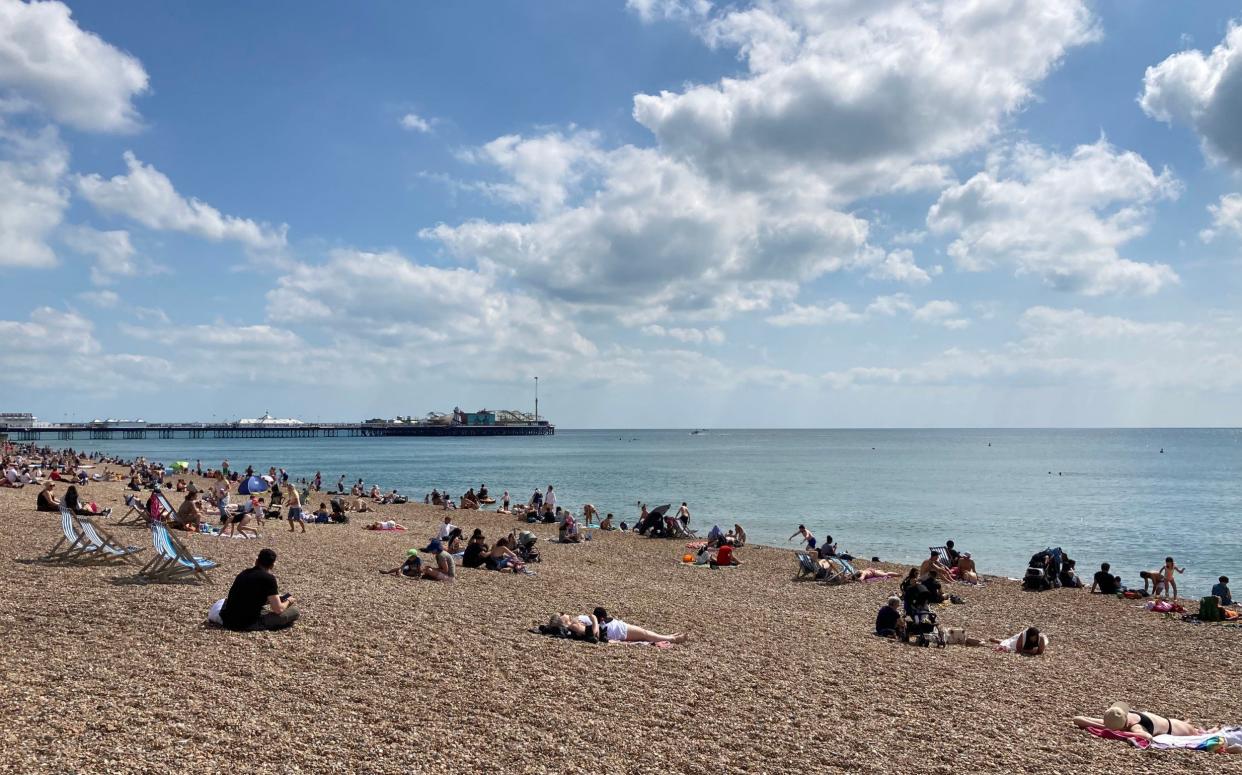Sewage now pollutes every single beach between Brighton and Hastings

Every beach between Brighton and Hastings is now polluted with sewage, data revealed on Friday.
Families heading to the south coast for a summer break are faced with minimal options for a swim in clean seas.
Two east Sussex beaches were closed on Wednesday after Southern Water's systems failed and the sea was flooded with untreated sewage.
Bexhill and Normans Bay are due to reopen on Saturday morning after being closed since Wednesday on the advice of the local council, after power failed at Galley Hill pumping station.
At several other beaches along the coastline heavy rain meant the company released raw sewage into the sea on Friday.
The company's own data says that sewage "may be affecting water quality" at Saltdean, Birling Gap, Newhaven, Eastbourne, Pevensey Bay, Normans Bay and Bexhill.
A spokesman for Southern Water said: "Following Rother District Council’s difficult decision to advise the closure of Bexhill and Normans Bay beaches on Wednesday afternoon, we are pleased to confirm that the council has advised on reopening the beaches on Saturday morning.
"The pumping station at Galley Hill remains in full operation. However, we continue our complex investigations, while maintaining our mobile generators on standby to prevent this happening again, and continuing staff monitoring 24 hours a day.
"We are continuing beach walks and litter picking throughout the weekend - so far we are finding very little.
"Again, we are deeply sorry for this incident and we understand the seriousness and distress this has caused."
Swimmers complain of mystery creatures
It came as swimmers in two seafront lakes in Somerset complained of "nips" from mystery creatures in the water, thought to be sea lice or jellyfish larvae.
A spokesman for Clevedon Marine Lake said: “We've had a few comments and messages about bitey things in the lake.
“One theory is that they're sea lice. Another, is that they're baby jellyfish - little jellyfish larvae (Medusa) that are difficult to spot.
“These critters get in the lake when the sea comes over the wall and they do bite or sting. For most people, it's just a little scratch sensation, but some of us more sensitive types can get a rash.
“The bad news is that there's nothing we can do to stop them - it's natural water and sea life lives in it, plus the water coming over the sea wall is much needed to keep the lake water fresh.”
Swimmers were warned to "wait until next weekend for your swim" if they wanted to escape the bites, and also to "avoid the edges and any seaweedy patches in the lake as that's where they tend to hang out."
Drainage systems overwhelmed after weather extremes
Weeks of hot, dry weather followed by heavy downpours at the start of this week meant that drainage systems were quickly overwhelmed, leading to flash flooding in the Midlands on Tuesday and in London and the south east on Wednesday.
Water companies also began releasing untreated sewage into rivers and the sea, something which is designed to happen in times of heavy rainfall as combined sewers become overwhelmed by water but is supposed to only happen in "exceptional" circumstances.
Data suggests in practice it happens for hundreds of thousands of hours each year.
The Met Office said wet and stormy weather could return next week.
Frank Saunders, the Met Office's chief meteorologist, said: “Some showers could bring the odd rumble of thunder for southern Scotland and northern England.
“After a dry start on Sunday cloud will build from the west as the next weather system approaches, bringing rain to Cornwall and then Northern Ireland by the end of the day. Temperatures will be down a little on Saturday, although it will be more humid.
“A broad band of rain will move eastwards across the UK on Monday, it will be heavy in places with a risk of thunderstorms.”

 Yahoo Movies
Yahoo Movies 
